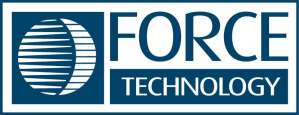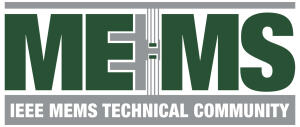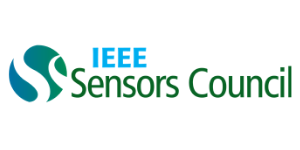Microwave and Hot Carrier based Sensors
This focused session straddles two separate, yet emerging areas in sensor technologies. Hot carriers are electrons and holes with high kinetic energies whose energy distribution is described by Maxwell-Boltzmann statistics at an elevated temperature. Hot carriers occur in semiconductor devices at high fields and in plasmonic systems. Hot carrier phenomena are important in ultrafast photodetectors, ultrahigh efficiency solar cells, plasmonic catalysts, wide bandgap light emitting diodes and power electronic devices. There is an acute need for sensing tools and techniques to characterize the dynamics of hot carriers. Microwave resonator sensors have shown their potential for real-time, robust, and complementary metal−oxide semiconductor-compatible sensing healthcare diagnostics, environmental sensing, and food monitoring. These sensors operate based on interactions between non-ionizing electromagnetic fields with material molecules via their permittivity and electromagnetic loss. Through field interactions, microwave resonator sensors are capable of contactless detection of the dielectric properties of materials in their proximity and are able to represent these properties as electrical parameters as a resonant amplitude and a resonant frequency. It is worth noting that microwave resonators are capable of monitoring hot carrier transients through the strong interaction of microwaves with free electrons and holes.
In-field Detection of Chemical, Biological and Security Threats
The vulnerability of critical indoor infrastructures to chemical terrorist attacks poses a significant concern for authorities responsible for incident preparedness and prevention worldwide. This relates to the specific features of indoor spaces and the extremely high population exposure potential, given the current organization of society. The range of possibilities for terrorist attacks involving toxic (bio)-chemicals is wide. In any event, an attack using unconventional weapons would certainly cause serious economic and social disruption to normal, day-to-day activities. This Focused Session pursues presenting and discussing the latest developments in early warning pervasive, in-field detection systems in the area of CBRN protection. Such detection systems should improve situational awareness and enable a reliable hazard identification for alarm confirmation.
This encompasses novel classes of unattended and cost-effective sensing and sampling networks for indoor air monitoring on vulnerable places such as wireless gas sensing networks comprising orthogonal and ultrasensitive micro-sensors able to raise a rapid first alarm. Additionally, gas pre-concentration/ sampling networks comprising advanced molecular traps coupled to the use portable ion-mobility spectrometers (IMS) or Raman spectrometers for surface enhanced Raman spectroscopy (SERS) detection in the gas or the liquid phase are considered for performing a reliable identification of the (bio)-chemical risk. Therefore, the scope of this Focused Session comprises, but is not limited to:
- Advanced chemical sensors and biosensors for the detection, identification and monitoring of explosives, chemical and biological threats
- SERS based sensing for the detection, identification and monitoring of explosives, chemical and biological threats
- Unattended, indoor gas sensing networks for detecting airborne chemical threats.
- Signal processing and pattern recognition techniques for advancing towards the detection, identification and monitoring of chemical, biological and security threats
- Advances in portable, ultrasensitive and selective systems (e.g. IMS, Raman) for the reliable, in-field identification of chemical and biological risks
Therefore, this Focused Session seeks to showcase original work on all aspects of nanomaterials, micro/nanodevices, autonomous miniaturized systems and artificial intelligence oriented to detection, identification and monitoring of hazardous compounds, i.e. chemical warfare agents, toxic industrial compounds, explosives… Of special interest are novel concepts, advanced chemical sensors and peripheral devices that improve limit of detection, response time and long-term operation on relevant scenarios. In addition, contributions dealing with the “in field” testing under real conditions of commercial devices and its performance comparison with existing analytical methods are also welcome.
Nanomaterials Based Sensors
anomaterials are an emerging and evolving group of materials with a wide range of unique electrical, optical, chemical, and mechanical properties. With rising global connectivity and automation during the last few decades, highly accurate, low power, miniaturized sensors that can be used for internet of things and human machine interfaces are necessary. Owing to the small size (smaller than 100 nm) and quantum confinement in one, two or three dimension/s nanomaterials are excellent candidates for the development of sensors with novel capabilities, higher sensitivity, higher accuracy, lower power consumption and smaller size. Nanomaterial based sensors have found vast applications in the health industry, biosciences, space, robotics, automobile, aerospace, food industries, and fundamental sciences such as physics and chemistry. The large and growing number of scientific articles (by around 500%) published in the field of nanomaterials-based sensors in the last decade indicates the increasing interest of scientific and industrial communities.
The goal of this focus session is to collect the recent advances in the cutting-edge sensing technologies enabled by utilizing nanomaterials such as quantum dots, nano wires, nano tubes, and two-dimensional materials.
Photoplethysmography Sensors and Applications
After the introduction of wearable optical heart rate monitoring roughly ten years ago, research in this area has increased rapidly. Today, wearable reflectance mode photoplethysmography (PPG) is already utilized also in measuring blood oxygen saturation, blood pressure, cardiac arrhythmia, and respiration rate, just to name a few areas in addition to heart rate monitoring. However, the research in the area of PPG sensors and their applications is today also more active than ever, trying to develop improved and e.g. more power efficient sensors and algorithms for the aforementioned and other PPG applications. The relatively new area in PPG technology, photoplethysmography imaging (PPGI), is also seeing increasing interest. To this focused session, we invite papers presenting developments in the sensor technology and algorithms of any type of PPG technology including reflective, transmittance, and remote PPG / PPGI as well as in any application domain including sports, health, and wellness.
Invited Speaker: Steven LeBoeuf from Valencell company will be giving an invited talk in the session
Bio-Remote Sensing and Integrated Artificial Intelligence Systems
This focus session provides a forum for research scientists, engineers, and practitioners from academia and industry throughout the world to present their latest research findings, ideas, and applications in the areas of remote sensing technology of vital signs of human and data analysis in integrated system technology. This new focus group will provide an opportunity for participants to present their latest ideas or research results that are related to both theoretical and applied research domains of remote sensing and remote actuators to measure human vital signs in emerging medical technology supported by artificial intelligence. It will cover and pioneer remote sensing and measuring with embedded and integrated systems with topics ranging from new remote sensing and measuring technologies and algorithms, wireless communication, integrated sensor fusion network up to embedded number crunching and grid computing. This can be achieved through fully integrated technologies and knowledge domain at the hardware and software level.
Timelines.
We have entered the era of sensors and measuring human vital signs on the body or in the body, with a lot of potentials. But at the same time, it has introduced a lot of practical drawbacks for none technical the care providers and end-users such as connecting and handling the devices and data interpretation on daily basis.









